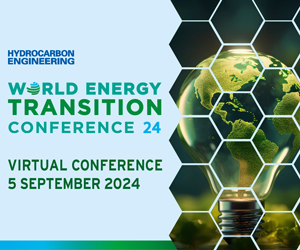Aquatic innovation raises crucial issues in a world where water management is becoming increasingly complex in the face of environmental challenges. From purification technologies to rainwater recovery systems, these advances are redefining our relationship with this vital resource. By integrating sustainable solutions and promoting responsible use, aquatic innovation not only transforms the way we consume water, but it also contributes to the preservation of our ecosystem. Thus, it is essential to understand how these technological developments can help us build a future that is more respectful of the environment and our natural resources.
Table of Contents
ToggleThe impact of aquatic innovation on our environment

THE purification techniques water have progressed spectacularly. The new ones filtration devices allow chemical and biological pollutants to be eliminated more effectively. Thanks to these innovations, local communities can now access cleaner water, thereby reducing health risks.
THE stormwater management systems have been redefined by solutions such as rain gardens and green roofs. These technologies promote thenatural infiltration water in the ground, reducing flooding and recharging water tables. They also contribute to the reduction of urban heat islands.
In agriculture, theprecision irrigation uses sensors and advanced techniques to optimize water use. This method helps reduce waste and improve the quantity and quality of harvests. Thus, it plays an essential role in preserving water resources while increasing agricultural productivity.
THE renewable energies as hydroelectricity and tidal power are increasingly used to provide clean energy. These energy sources cause less pollution and provide a sustainable alternative to fossil fuels. They are essential for the fight against climate change.
Innovations in eco-technologies aquatic technologies have reshaped the way we clean the oceans. Devices such as floating barriers and the marine drones collect plastic waste on a large scale. These technologies are crucial for restoring marine ecosystems and protecting biodiversity.
Efforts to manage waste water with advanced processing techniques greatly contribute to the protection of the environment. THE modern sewage treatment plants use biological, chemical and physical processes to purify water before releasing it into waterways. This reduces contamination of rivers and preserves aquatic ecosystems.
New technologies for water management
L’aquatic innovation plays a crucial role in redefining our relationship withwater and his ecosystem. With constant advances, these technologies offer solutions to efficiently manage water resources, while minimizing their environmental impact.
Sustainable water management has become a global priority. One of the most significant aspects of aquatic innovation lies in the development of purification technologies and of desalination. These systems make drinking water accessible to millions of people while reducing pressure on fresh water resources. For example :
- Improved nano-filtration membranes reduce costs and increase efficiency in water treatment.
- Solar-powered desalination systems provide an environmentally friendly alternative to traditional energy-intensive methods.
Innovations in the field of distribution networks water also play an essential role. THE smart meters and remote water management systems help detect and prevent leaks, thus optimizing the use of this precious resource. In addition, these technologies provide a better understanding of water consumption patterns, helping communities and individuals adapt their actions to reduce waste.
In industrialization and agriculture, aquatic innovation translates into systems of wastewater reuse and precision irrigation practices. Techniques such as drip irrigation and soil moisture sensors allow water to be used more efficiently, which is crucial in arid regions or periods of drought.
One of the most significant impacts of these innovations on our environment is the reduction of water pollution. Initiatives such as floating booms to capture plastic waste and filtration devices in sewers limit contamination of rivers and oceans. This contributes to the protection of aquatic biodiversity and maintaining the health of marine ecosystems.
In conclusion, it is clear that aquatic innovation has a profound impact on the way we manage and consume water. By integrating these cutting-edge technologies, we can hope for a future where the management of this vital resource is more sustainable and environmentally friendly.
Sustainable solutions for responsible water use
Aquatic innovation plays a key role in redefining our relationship with water andecosystem. By using advanced technologies, we can now better manage this precious resource while reducing our environmental impact. These innovations include systems of recovery and of water recycling, advanced treatment methods and solutions for waste reduction plastics in the oceans.
The impact of aquatic innovation is vast. It not only improves the water quality, but also to preserve the aquatic ecosystems. By adopting these technologies, communities can reduce their dependence on often limited freshwater resources. For example, systems of desalination modernized systems offer solutions to transform salt water into drinking water more efficiently and less expensively.
For responsible use of water, various sustainable solutions are implemented. Here are some examples:
- Rainwater collection : Helps reduce drinking water consumption for domestic and agricultural uses.
- Reuse of gray water : Use domestic wastewater for non-potable uses such as irrigation or toilets.
- Efficient irrigation systems : Technologies such as drip irrigation to minimize water loss in agriculture.
- Water treatment plants : Advances in purification processes to remove contaminants in a more environmentally friendly way.
By adopting these practices and technologies, we can not only ensure sustainable access to water for future generations, but also protect natural habitats and reduce our ecological footprint.









